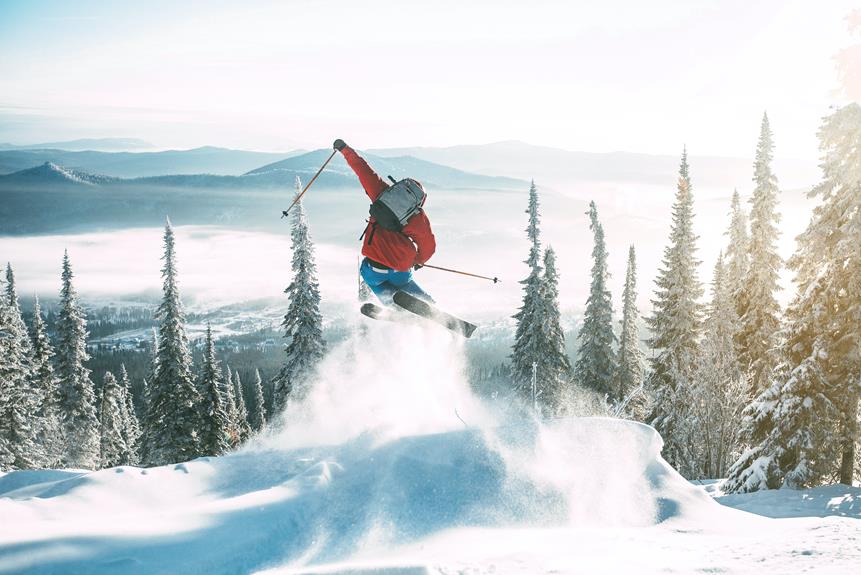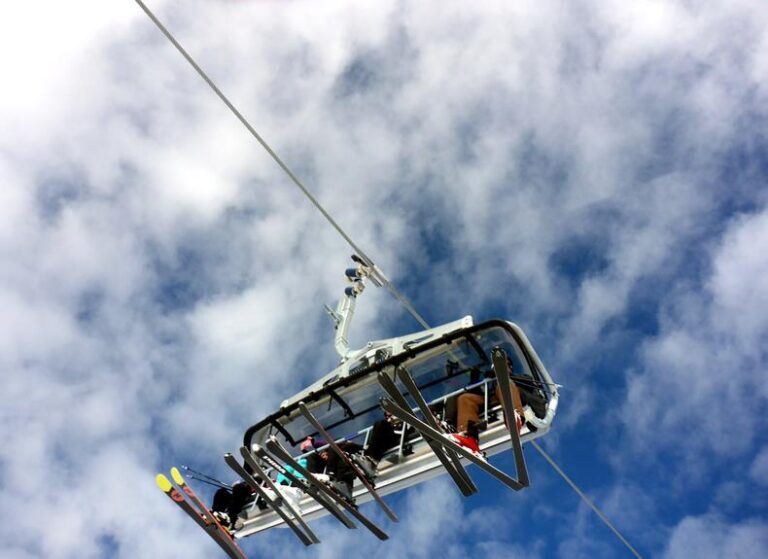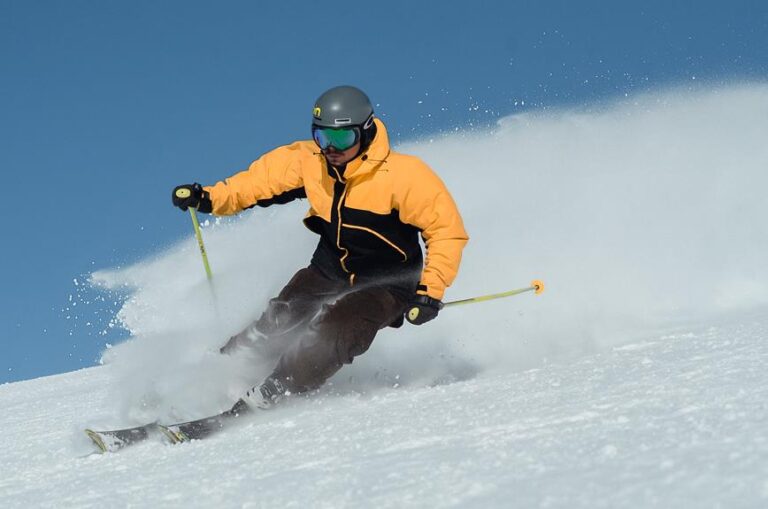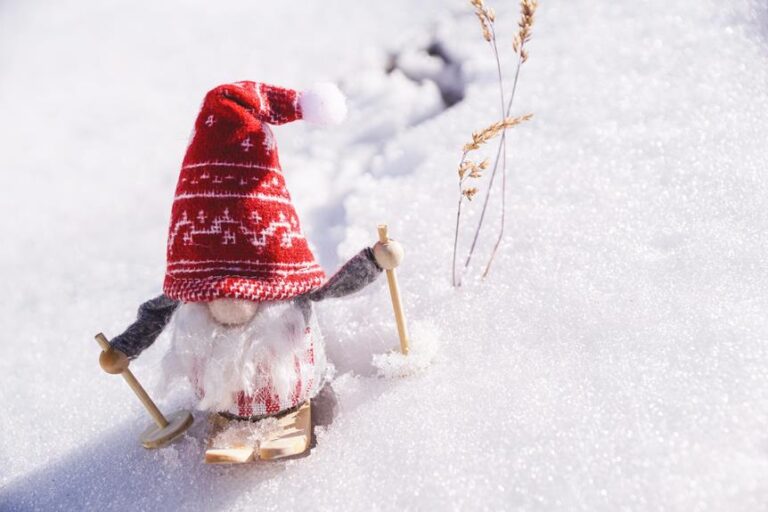Should Powder Skis Be Longer – 2024 Edition
Are you tired of sinking into deep powder and struggling to stay afloat on your skis? Perhaps you've heard skiers rave about the benefits of longer powder skis. But before you rush to trade in your trusty pair, it's important to consider all the factors at play.
In this discussion, we will explore the advantages of longer powder skis, including improved floatation and stability, and how they can enhance your skiing experience. So, if you're curious about whether longer skis are the secret to conquering those untouched powder stashes, keep reading to discover the answer.
The Maneuverability Factor
How can powder skis length impact the maneuverability of your turns?
When it comes to powder skis, the length of the ski plays a crucial role in determining their maneuverability. A longer ski generally provides better stability and floatation in deep snow conditions. However, it also affects how quickly and easily you can turn.
The maneuverability factor of longer skis can be both an advantage and a disadvantage. On one hand, longer skis allow you to maintain better control at high speeds and make longer, sweeping turns. The increased surface area helps you stay on top of the powder, preventing you from sinking and allowing for a smoother ride. This is especially beneficial in wide-open spaces where you can really let loose.
On the other hand, longer skis can be more challenging to maneuver in tight spaces or when navigating through trees. The increased length makes it harder to make quick, sharp turns and requires more effort to change direction. This can make it difficult to navigate through obstacles or make precise adjustments.
Ultimately, the decision on ski length should consider your skiing style, the terrain you plan to tackle, and your personal preferences. It's important to find a balance that provides both stability and maneuverability, ensuring an enjoyable and safe skiing experience on powder days.
The Floatation Advantage
When it comes to powder skiing, longer skis offer a distinct advantage in terms of floatation on deep snow. The extra length helps you stay on top of the powder, preventing you from sinking and allowing for smoother and more stable skiing. Longer powder skis distribute your weight over a larger surface area, providing better floatation and reducing the chances of getting stuck or losing momentum. This means you can confidently tackle those waist-deep powder runs without worrying about getting bogged down.
The floatation advantage of longer skis is particularly beneficial in open bowls, backcountry terrain, and areas with heavy snowfall. However, it's important to note that longer skis may not be as maneuverable in dense trees or tight areas. In these situations, shorter powder skis can offer enhanced agility and control. The choice between longer and shorter powder skis ultimately depends on your personal preferences, skiing ability, and the specific terrain you'll be skiing.
Stability in Deep Snow
To achieve optimal stability in deep snow, the width and length of your powder skis play a crucial role. Wider and longer skis provide better floatation and stability in powder. The increased surface area of wider skis allows for better distribution of your weight, preventing you from sinking too deep into the snow. This helps in maintaining stability and control as you navigate through the soft, fluffy powder.
Longer powder skis also contribute to stability in deep snow. The added length provides greater stability at higher speeds and helps to prevent tip dive, where the front of your skis sinks into the snow. This is especially important when skiing in deep, untouched powder, where maintaining balance and control can be challenging.
However, it's important to consider personal factors such as height, weight, and skiing ability when choosing the length of powder skis. A longer ski may provide better stability for someone who's taller and heavier, while a shorter ski may be more manageable for someone who's smaller or less experienced.
It's also helpful to seek recommendations from other skiers who've tested different powder skis. Testimonials can offer valuable insights into the recommended lengths of specific skis for stability and float in deep snow. For example, the Atomic Automatic 109 in 182 has been praised for its stability and performance in deep snow.
Controlling Speed and Turns
To control your speed and turns on the slopes, focus on adjusting your body position to initiate and control the necessary movements. Flex your ankles, knees, and hips to adjust the pressure on your skis, influencing both speed and turn shape. By doing so, you can effectively manage your speed and navigate turns with ease.
In addition to body positioning, utilizing pole plants and upper body rotation can further guide your turns and help control your speed. By planting your poles and rotating your upper body in the direction of the turn, you can effectively steer yourself and regulate your speed on the slopes.
Another important aspect of controlling speed and turns is adjusting your line and turn shape. By adapting your line and turn shape according to the terrain and snow conditions, you can effectively manage your speed and improve your overall skiing experience.
Moreover, developing and refining your edge control is crucial for controlling speed and turns. By mastering edge control, you can effectively navigate turns and regulate your speed, regardless of the conditions.
To summarize, controlling speed and turns requires a combination of body positioning, pole plants, adjusting your line and turn shape, and refining your edge control. By implementing these techniques, you can enhance your skiing abilities and have a more enjoyable time on the slopes.
| Technique | Description | Benefits |
|---|---|---|
| Flexing Ankles, Knees, | Adjusting the pressure on the skis by flexing your ankles, knees, and hips | Influences speed and turn shape |
| and Hips | ||
| Pole Plants and Upper | Utilizing pole plants and upper body rotation to guide turns and control speed on the slopes | Steer yourself and regulate speed |
| Body Rotation | ||
| Adjusting Line and | Adapting your line and turn shape according to the terrain and snow conditions | Manage speed and improve experience |
| Turn Shape | ||
| Refining Edge Control | Developing and refining edge control skills to effectively navigate turns and regulate your speed | Enhance skiing abilities |
Finding the Perfect Length
Now that you have learned how to control your speed and turns on the slopes, let's focus on finding the perfect length for your powder skis.
When it comes to powder skiing, longer skis are generally preferred. The ideal length for powder skis starts around 105mm underfoot. Longer skis provide better floatation and stability, making them more suitable for fast skiing in powdery bowls.
However, it's important to consider your skiing style and preferences. If you're a non-aggressive skier, a length of 170mm would be closer to the mark, as going longer may not be necessary. Shorter skis can also be more comfortable in trees and tight areas, allowing for better maneuverability.
On the other hand, longer skis tend to provide better floatation in powder, allowing you to glide smoothly through the snow. When determining the perfect length for your powder skis, make sure to take into account your personal skiing style, the terrain you'll be skiing on, and your ski history.
Frequently Asked Questions
How Do You Know What Size Powder Skis to Get?
To figure out what size powder skis to get, use a ski size calculator. Consider the benefits of shorter powder skis like maneuverability in trees. Remember to choose a ski length suitable for your skiing style and terrain.
What Length Powder Skis Should a 5 8 Woman Wear?
For a 5'8" woman, ski length recommendations for powder skiing vary. Some suggest around 177mm, while others recommend shorter skis for maneuverability in trees and tight areas. Consider your personal preferences and skiing style.
How Do You Tell if Your Skis Are Too Short?
If your skis feel unstable, you struggle to stay balanced, and you sink in deep snow, these are signs of skiing with skis that are too short. Finding the perfect length for powder skis is crucial. Longer powder skis offer more stability and floatation.
How Many Inches of Snow Do You Need for Powder Skis?
To determine the optimal ski length for deep powder conditions, consider factors such as your height, weight, and skiing ability, as well as the amount of snowfall. Longer skis offer better float, but also consider maneuverability in tight areas.
Conclusion
Ultimately, the length of powder skis should be based on personal preference and individual dynamics. While longer skis can provide better floatation and stability in deep snow, shorter skis offer increased maneuverability in tight areas.
Finding the perfect length involves considering factors such as height, weight, ability level, and skiing style. Ski designers can offer personalized recommendations to ensure the perfect fit.
So, whether you prefer longer or shorter skis, the choice ultimately depends on what works best for you.






